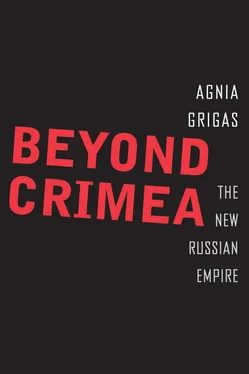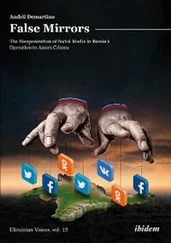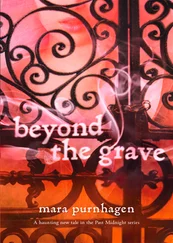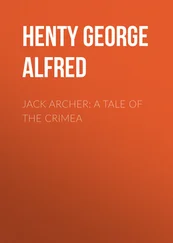In his quest to strengthen the Soviet empire and his rule, Stalin ordered mass murder and the deportation of many nations (including the Russians) to Soviet labor camps, or the so-called Gulag. 21Already by the end of 1930s, Stalin had a quarter of a million Soviet citizens shot, solely on the grounds of their nationalities. 22Before the Second World War, the labor camps had the dual purpose of providing free labor to contribute to the growth of the Soviet economy and punishing “enemies of the state.” 23As the war approached, Stalin was increasingly concerned with the security of the Soviet Union’s borders. Therefore, ethnic cleansings were carried out to relocate minorities from border regions inward into Russian territories, on the assumption that separation from their homelands would lead to a faster assimilation into Soviet society. 24In their places, other nationalities (often Russians) were brought in.
In the period of 1935 to 1938 at least nine Soviet nationalities suffered ethnic cleansing, and from 1941 to 1948 the total of exiled or resettled people reached an estimated 3.3 million people. 25Before, during, and after the Second World War Poles, Romanians, Volga Germans, Estonians, Latvians, Lithuanians, Finns, Crimean Tatars, Crimean Greeks, and other nationalities experienced mass deportations to labor camps. Although motives for cleansing varied (for example, Crimean Tatars allegedly posed a fifth column risk and Chechens were suspected to have separatist aspirations), after such deportations Russian immigration into the newly cleansed territories followed. 26The allegedly deliberate famine in Ukraine of 1933–33, which has been called “the classic example of Soviet genocide,” took around 5 million Ukrainian lives. 27In 1944 more than 190,000 Crimean Tatars were deported from Crimea to Uzbekistan and lost their national autonomy. 28Only 40 percent of the prewar population of Crimean Tatars remained in the peninsula by 1945. 29During the resettlement and industrialization campaign in the Baltic States, Russian workers, military personnel, and (in the 1980s) convicts arrived from other parts of the Soviet Union. 30As a result, the number of Russians in Latvia increased from 10.5 percent in 1935 to 35 percent in 1989 and in Estonia grew from 8 percent in 1934 to 30 percent in 1989. 31Only in Lithuania was the increase much lower, from 3 percent in 1939 to 9 percent in 1989. 32Thus, the Baltic States, Ukraine, Crimea, Central Asian countries, and others were left with mixed ethnic populations and large numbers of Russian minorities. At the same time, the Soviet Union pursued the contradictory national policy of preserving national boundaries of the Soviet republics and trying to create a monolithic Soviet (but Russified) identity. This further contributed to the large populations of Russian-speaking peoples of various ethnicities residing across the territory of the Soviet Union.
Stalin’s rule lasted nearly thirty years, and during those brutal decades he did achieve much that he set out to accomplish. By 1991 when the Soviet Union fell, the former Soviet republics that gained independence were ethnically mixed. Large numbers of ethnic Russians and Russian speakers were concentrated in certain territories in every independent state of the former USSR, and this situation remains largely unchanged until the present day. The Russian Federation that emerged in 1991 inherited this problem and an ideological dilemma. Should the concept of the Russian nation in the new Russian state include the Soviet diaspora? Should the Russian nation be based on civic, ethnic, or imperial concepts? These were the questions that Presidents Boris Yeltsin and Vladimir Putin and their advisers would in time have to answer.
THE RUSSIAN NATION AND COMPATRIOTS
The present-day concept of the Russian compatriot both stems from and relates to a broader understanding of the Russian nation. Professor of Russian studies Vera Tolz in her book Russia identifies five distinct conceptions of the Russian nation in the post-Soviet period derived from intellectual debate and political statements. 33The first conception emphasizes the Union (or imperial) identity. It sees the Russians as destined to create and maintain a multinational state. This viewpoint is supported by nationally minded Communists, rhetorical ultranationalists, and Eurasianists. The political project of these people, in its maximal form, is the restoration of the Russian Empire or of the USSR. According to this conceptualization of Russian nationhood, Russian compatriots would include all former citizens of the USSR and their descendants. A second way to conceptualize the Russian nation is to include the entire community of Eastern Slavs: the Russians, Ukrainians, and Belarusians who speak closely related languages and traditionally share the Orthodox Christian faith. This vision of Russian identity could present a narrower notion of Russian compatriots based on religious and cultural affinities. The third conception of the Russian nation inclines instead to a broader vision, including all who use Russian as their first or habitual language, regardless of their ethnicity. This view would lead to a redrawing of Russian borders to include Russian-speaking parts of Ukraine, Moldova, Kazakhstan, Latvia, and Estonia, and most if not all of Belarus. The fourth conception offered by Tolz is racial, including only those who are Russian by blood. This is aimed above all at excluding Jews and peoples from the Caucasus and Central Asia. As these approaches suggest, the range of ways of conceiving the Russian nation includes visions that emphasize ancient historical and religiously rooted prejudices, while other visions emphasize more secular ways of thinking.
The fifth conception of the Russian nation is civic, embracing the citizens of the Russian Federation. Tolz points out that Yeltsin, Putin, and some of their ministers, while in theory committed to this civic definition of the Russian nation, have in practice on many occasions implicitly extended it to ethnic Russians and “Russian-speaking populations” residing in the former Soviet republics, only a few of whom are citizens of the Russian Federation. As scholar of Russia Charles Ziegler notes, the term “compatriot” generally refers to culturally Russified peoples and to ethnic Russians living in the fourteen independent states of the former Soviet Union. 34
In his New Year’s address to the Russian nation in January of 1994, Yeltsin specifically appealed to Russian speakers in the near abroad (rather than solely to Russian citizens), saying: “Dear compatriots! You are inseparable from us and we are inseparable from you. We were and we will be together. On the basis of law and solidarity, we defend and will defend your and our common interests. In the New Year, 1994, we will do this with greater energy and greater resoluteness.” 35Yeltsin repeated a similar statement later that year in his annual address to the Federal Assembly. Though in general Yeltsin failed to consistently back up his rhetoric with action, this demonstrated both how a new concept of compatriots had emerged and the fact that the notion of a civic state was still very novel in Russia in the 1990s. Instead, the definition of Russianness emphasized language and culture. 36Certainly, the official dissolution of the Soviet Union in 1991 left many ethnic Russians and Russian speakers outside the border of the Russian Federation—a population still often looking to Moscow rather than the capitals of their respective post-Soviet states for guidance. However, Moscow’s response to this dilemma and potential opportunity would take nearly two decades to fully formulate and would be articulated in some twenty documents released from 1994 to 2014 (see Tables 1 and 2 for a list of the main compatriot policies under Yeltsin and Putin).
Читать дальше












